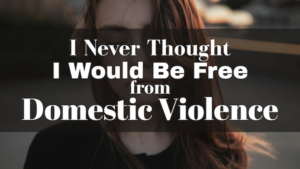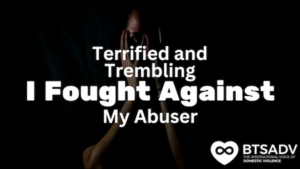By Rebecca Lynn
Teens and young adults from 16 to 24 years old experience the highest rates of intimate partner violence, making them the age group most at-risk of experiencing domestic violence, according to Love is Respect.org.
Love is Respect.org also reports:
- 1 in 3 adolescents are victims of dating abuse,
- 43% of college students are victims of dating violence, yet only 33% of those college students report the abuse,
- 57% of college students are unable to identify dating violence
Yet despite these statistics, 58% of college students are don’t know how to help someone who is in an abusive relationship. The lack of awareness doesn’t stop there, 81% of parents do not believe that dating abuse is an issue among teens and young adults, yet 82% of those parents are confident if their child were in an abusive situation, they would be able to identify the signs.
But if abuse is so prevalent in younger people, why is it something that is rarely discussed?
Similar to domestic violence in older age groups, knowledge about the signs, silence of the abuse, and overall lack of awareness makes it difficult to recognize and intervene with young adults.
Today’s teens and young adults born between 1994 and 2015 are part of Generation Z and are part of the largest generation among us, forming over 27% of the nation. This generation grew up with social media, the pre-established internet, and ever-growing technological advancements. GenZ is known for being more racially diverse, independent, and focused on justice and helping those in need. However, with technology at their fingertips, they also have easy access to pornography, begin “sexting” as early as middle school, and have either been victims or have victimized others over social media. As technology advances, so do the ways abusers can use it for control.
The National Domestic Violence Hotline defines digital abuse as the use of technology (such as texting and networking) to bully, harass, stalk, or control a partner. Due to the ready access to technology, this generation of teens and adults are constantly vulnerable to digital abuse. All types of domestic abuse, whether physical, emotional, financial, or digital, are based on the same purpose, control of the victim. Digital abuse has changed the way abusers are able to isolate, keep tabs on, emotionally break down, manipulate, and control their victims. According to the National Domestic Violence Hotline, there are many red flags put out by the abuser, which may indicate that someone is a victim of digital abuse. These include:
- Dictating who the victim can be friends with or not over social media platforms.
- Sending negative, threatening or degrading tweets, messages, emails or texts.
- Sending unwanted and explicit photos or videos and pressuring the victim to send their own back.
- Tracking the victim’s location using social media or GPS.
- Stealing or demanding the victim’s passwords or log-ins and using them to monitor social media and cell phone usage.
- Using the passwords to create fake profiles, hi-jack social media accounts, and manipulate the victim to post pictures or messages that would humiliate them.
- Excessively calling or texting the victim, expects them to answer immediately, inquiring about their whereabouts, and creating fear in the victim that they must be available at all times to reply to the abuser, or risk angering them.
- Installing spyware, tracking devices, cameras, dual apps, and hidden apps on digital devices that are difficult to detect.
Digital abuse continues to increase as teens and young adults find that it is becoming easier to bully, catfish, gossip, and intimidate others when protected behind their screens. It is no longer necessary to be face-to-face in order to emotionally abuse a victim, isolate them from family and friends, lower their self-esteem, manipulate them, and gain control. So, what can be done to help teens and young adults both recognize and get the support they need to end their digital abuse?
Just like in older victims, the key is knowledge, awareness, and support. Intervention is essential, and the best place for it to occur is at home, if possible. Parents who are aware of the impact of digital abuse can be a powerful source of support by listening, reassuring, and demonstrating to the victim what a healthy relationship looks like. According to The Respect Challenge , some of the things that parents can do to support and teach young adults about healthy relationships, like:
- Encouraging open and honest communication
- Being sensitive, but also firm.
- Understanding teen development.
- Understanding the pressures that teens experience on a daily basis.
- Taking a clear stand about respect and healthy relationships.
- Using teachable moments when they present themselves.
- Actively participating in the child’s life and being present.
According to Futures Without Violence, there are five major signs of a healthy relationship, these include:
- Giving each other space to spend time with family, friends, and hobbies, that are outside of their relationship.
- Knowing that it is okay to disagree. Everyone should feel comfortable and safe communicating what is on their mind.
- Respecting physical boundaries. No one should ever be pressured into anything, including using drugs and alcohol or having sex.
- Giving each person the freedom to make their own choices, including what they wear and who they spend their time with.
- Communicating clear digital boundaries so there is no excessive texting, any type of tracking, sexting, and going through each other’s phones or social media accounts.
However, not all parents have healthy relationships and not all young adults are able to talk to a trusted adult. This is why it is even more important that teens and young adults are taught at a young age what a healthy relationship looks like, who to go to for support, and, as a friend when intervention is needed.
If you or someone you know is in an abusive relationship, there is help. You can visit the Break the Silence Against Domestic Violence website at www.breakthesilencedv.org or chat with one of our helpline advocates at 855-287-1777.









